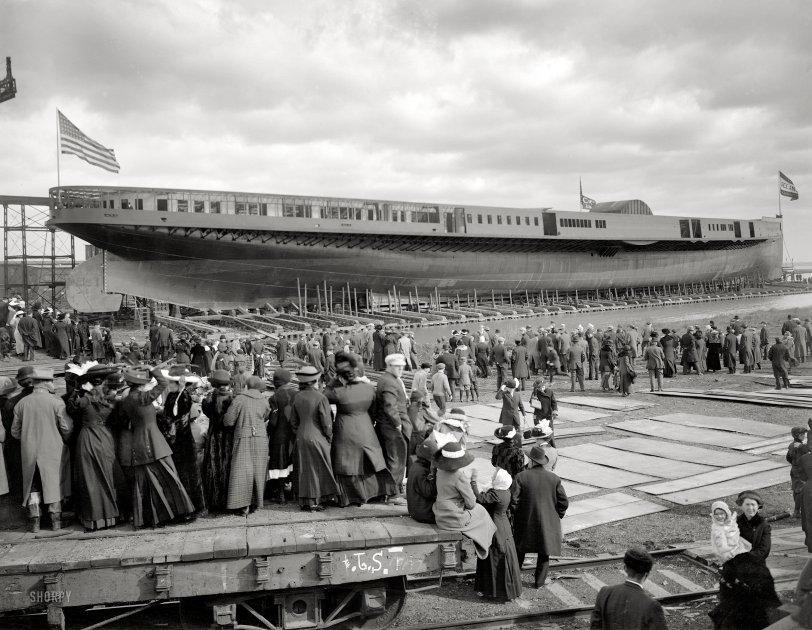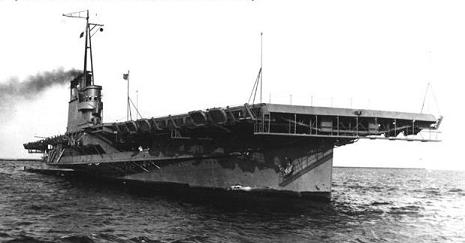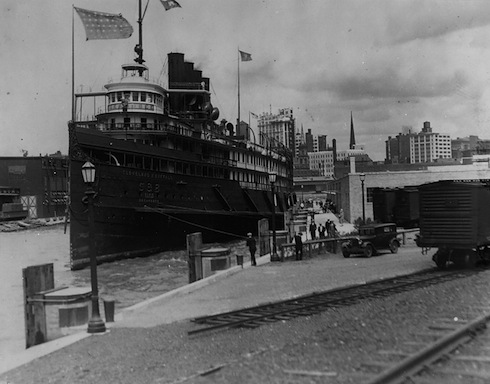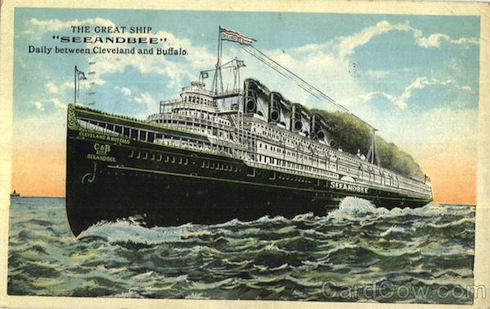


Framed or unframed, desk size to sofa size, printed by us in Arizona and Alabama since 2007. Explore now.
Shorpy is funded by you. Patreon contributors get an ad-free experience.
Learn more.

- Baldwin 62303
- Baldwin VO-1000
- Cold
- No expense spared
- Tough Guys
- Lost in Toyland
- And without gloves
- If I were a blindfolded time traveler
- Smoke Consumer Also Cooks
- Oh that stove!
- Possibly still there?
- What?!?
- $100 Reward
- Freeze Frame
- Texas Flyer wanted
- Just a Year Too Soon
- WWII -- Replacing men with women at the railroad crossing.
- Yes, Icing
- You kids drive me nuts!
- NOT An Easy Job
- I wonder
- Just add window boxes
- Icing Platform?
- Indiana Harbor Belt abides
- Freezing haze
- Corrections (for those who care)
- C&NW at Nelson
- Fallen Flags
- A dangerous job made worse
- Water Stop
Print Emporium
Seeandbee: 1912

November 9, 1912. Wyandotte, Michigan. "Steamer Seeandbee on the ways just before the launch." 8x10 glass negative, Detroit Publishing Co. View full size.
Where's Waldo
I think I have found him and his twin brother wearing identical knit caps in the front, near the water, to the right of center.
Last word on RR wheels?
All the previous posts are partially correct in their own way. The wheel in question is almost undoubtedly a cast wheel. The raised lettering is a clue. The 1888 is also undoubtedly the date of manufacture.
Railroad car wheels are currently manufactured both by forging and by casting. I believe that cast wheels comprise a larger segment of the new wheel market, due to lower cost. These are cast STEEL wheels, not cast iron, manufactured in highly automated facilities.
However, a wheel cast in 1888 is most likely a cast IRON wheel. The real visual ID on these are the cast-in cooling ribs on the reverse side. More than anyone likely wanted to know about a minor detail in the foreground!
John G (former RR Car Dept. Manager)
More on RR wheels
Those wheels are cast. The date of manufacture is included in serial numbers today per AAR regulations. I don`t know if that was true in 1888. All wheels made in North America today are cast except for the following manufacturer. http://www.standardsteel.com/history.html Forged wheels are required for passenger service and some freight cars. Most cast wheels today have the serial numbers on the back plate raised above the surface. Forged wheels have numbers stamped into the back hub or rim face.
Retired wheel machinist.
Fire Safety
The Seeandbee represented a step forward in providing fire detection and suppression built into the vessel. Perhaps that, along with large size, made her a suitable candidate for conversion to an aircraft carrier. While steam-driven side-wheel paddlers were approaching their final days when the Seeandbee was launched, it was still considered by some to be superior propulsion system for maneuverability and passage through ice.
Safety Engineering, Vol. 26, November, 1913.A New Era in Steamship Equipment
At last a steamship company has constructed a vessel in which the fire peril has been considered as important as length, breadth and comfort.
There has recently been launched the largest and most costly passenger ship on inland waters—the "Seeandbee"—built by the Detroit Shipbuilding Company, and owned by the Cleveland and Buffalo Transportation Company. This vessel plies between Cleveland and Detroit. The "Seeandbee" is 500 feet in length and has sleeping accommodations for 1.500 passengers. In the design and equipment of this vessel, nothing in the way of comfort has been omitted.
A new element of safety has been introduced. Contrary to the almost universal rule of steamship construction, the owners of the "Seeandbee" have afforded protection against fire for the passengers. The Aero Fire Alarm Company, New York, has equipped the ship throughout with the Aero Automatic Fire Alarm System. Sprinklers have been installed. How many passenger-carrying steamships carry such protection against fire?
Examples have been frequent recently of the terrible destruction which fire accomplishes when it appears on a vessel unequipped to speedily detect and extinguish fire outbreaks. Thousands of lives are jeopardized each day on board firetrap ships, the owners of which refuse to consider seriously the grave danger to life from the fire peril which exists in their vessels. The Cleveland & Buffalo Transportation Company has set an example in providing for the safety of passengers, which can well be followed by other steamship owners. The "Seeandbee" represents a great step forward in steamship construction.
The Aero Automatic Fire Alarm System consists of a fine copper tube which is extended in loops throughout the entire ship. Both ends of these loops are returned to a cabinet, which, on one end, contains a sensitive diaphragm, which moves sufficiently to touch an electrical contact point on the occasion of fire breaking out in the ship. Fire causes a rapid rise of temperature, and thus the air in the tube expands and so operates the diaphragm. The other end of the circuit terminates in a testing valve, which is opened at the time of testing into an air pump, by which pressure is created in the tube similar to fire pressure, causing the diaphragm on the other end to make the electric contact and carries out in exact manner the operation of the system in the event of an actual fire. …
More freight car wheels !
Freight car wheels are forged not cast as they are made of steel and turned to the final dimensions. The 1888 is the year of manufacture as railroads like to keep track of how long things last and for the past hundred years or so it has been required by the Feds.( retired railroad machinist)
Flat car wheel
That wheel has been cast, not forged. The number is probably a serial number.
Old wheel
I like the flatcars wheel - forged with the year 1888.
Also, when they launch ships like this, how do they / DO they recover the wood rigging that slides into the water? Does it sink? Float?
Proto-tagging
All you commenters from last week: the railroad car in the foreground appears to have some sort of pre-spray paint graffiti on it, including what looks like a stylized letter "T".
Honeymoon and Tailhook
My late friend graduated from the US Naval Acadmedy in 1941 and married, spending his honeymoon on a SeeandBee voyage. He then became a Naval Air Pilot and practiced carrier landings and take-offs from the same ship renamed the USS Wolverine. Certainly he and his wife were one couple of maybe a few who could have ever claimed to have spent their honeymoon on an aircraft carrier.
Splash Zone?
A new launch looks like a popular spectacle, but I wonder if the front rows, close to the near side of the ways, is a Shamu-style splash zone!
"Please leave all Kodaks and radio equipment in your automobiles, as the management cannot be responsible for damages!"
No Ducking Required
If I'm not mistaken, the poles aren't pulled out from under the hull at launch. The ship and the support poles are all resting upon those topmost inclined planks, and it's the planks which are being held in place from the other side. Their anchorage is removed, and the whole system, ship, poles and planks, slides off.
All together now, on the count of three:
So when it is time to launch it do all of those guys under the ship knock out their respective support poles and then duck quickly between the rails that it uses to slide sideways into the water?
What happens if one or more of the poles are not cooperative about knocking loose or someone misses the three count?
Sounds to me like an occupation that life insurance companies would certainly shy away from.
I must be missing something, there must be a better way. Please enlighten us Shorpy.
Tension
It must be a really tense time, standing there, just waiting for someone to give the signal and see this marvelous ship slide into the water. And float [hopefully]. I like the lady in the lower right corner with the babe in arms, I'd step back a bit further if I were her, just in case.
Sidewheeler to carrier
In WW II the Seandbee was converted to the USS Wolverine, a training carrier (or "unclassified miscellaneous auxiliary", acto the navy). One GHW Bush qualified for carrier duty on her sister training ship, the USS Sable.

The Name
was selected by contest, and Seeandbee stood for "C&B" -- Cleveland & Buffalo, the railroad that owned her.
Seeandbee's Future Accomplishments
Early on in WWII, the Seeandbee (along with the Greater Buffalo) were purchased by the Navy and converted into the world's only freshwater, coal-fired, paddlewheel aircraft carriers (The USS Wolverine and the Uss Sable, respectively), for training pilots. Both were scrapped at the end of the war.
It Wasn't Finished Yet
They must have finished it off while it was in the water. Here's what it looked like finished.


Strange fate
She became in 1942 the USS Wolverine (IX-64), a converted training carrier. The only one of two sidewheeler carriers ever.
























On Shorpy:
Today’s Top 5